-

Sep
15
Interpretive Summary: Feeding a high-energy finishing diet upon arrival to high-risk feedlot calves: effects on health, performance, ruminal pH, rumination, serum metabolites, and carcass traits
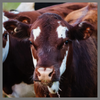
When high-risk cattle arrive at the feedlot, they have low feed consumption and a greater risk for disease because of stress, inflammation, and exposure to pathogens. Because of reduced feed consumption, newly arrived cattle may not be able to meet their energy requirement for growth during the first several weeks after feedlot arrival.
Read more
-

Sep
15
Interpretive Summary: Precision feeding of lactating sows: implementation and evaluation of a decision support system in farm conditions
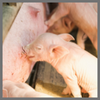
In lactating sows, nutrient requirements among individual animals vary greatly. With a single diet, lactating sows are likely to be either underfed, which results in body reserve mobilization, or overfed, which results in nutrient excretion.
Read more
-

Sep
08
Interpretive Summary: A preliminary exploration of the impact of experiential learning on animal science undergraduates’ perceptions of humane stunning and slaughter
.png?sfvrsn=1cf852d1_0)
It is essential to educate students about humane slaughter as it is a critical component of livestock production, particularly for animal science students who represent future stakeholders in agriculture. There is limited research about the effects of experiential learning on student comfort in participating in education regarding sensitive, yet important topics in the animal sciences.
Read more
-

Sep
08
Interpretive Summary: Frequency of maternal supplementation of energy and protein during late gestation modulates preweaning growth of their beef offspring
.png?sfvrsn=b2ff52d1_0)
Decreasing the frequency of protein and energy supplementation to beef cattle is often used to reduce labor and feeding costs. We hypothesized that reducing the frequency of protein and energy during third trimester of gestation of beef cows would not impact maternal performance but would be detrimental to offspring growth.
Read more
-

Sep
08
Interpretive Summary: Effects of adding potassium bicarbonate to diets with high or low crystalline lysine to influence dietary cation–anion difference on finishing pig growth performance
.png?sfvrsn=dbf852d1_0)
Potassium, fed as potassium bicarbonate (KHCO3) in this study, is essential for swine and is a key component of numerous physiological processes such as the maintenance of electrolyte balance, neuromuscular function. Feeding high levels of chloride anions, via crystalline lysine (L-Lys HCl) has been shown to negatively impact intake and growth performance of pigs.
Read more
-

Sep
08
Interpretive Summary: Effects of a Saccharomyces cerevisiae fermentation product-supplemented diet on circulating immune cells and oxidative stress markers of dogs
.png?sfvrsn=d6fe52d1_0)
Saccharomyces cerevisiae fermentation product (SCFP) is a yeast product containing bioactive fermentation metabolites, residual yeast cells, and yeast cell wall fragments. In this study, SCFP was investigated for its impacts on immune health, oxidative stress, and skin and hair coat health in dogs.
Read more
-

Sep
08
Interpretive Summary: Infographic: Effects of a Saccharomyces cerevisiae fermentation product-supplemented diet on circulating immune cells and oxidative stress markers in dogs
.png?sfvrsn=b1fe52d1_0)
The American Society of Animal Science and the Editors of the Journal of Animal Science invite you to have a look at the latest infographic and paper which explores how a fermentation product included in the diet of dogs may impact immune cells, oxidative stress/inflammation and skin and coat health.
Read more
-

Sep
01
USDA investing $197 million in conservation
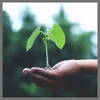
The United States Department of Agriculture (USDA) has announced through the Regional Conservation Partnership Program, that it will be awarding $197 million for 41 locally-led conservation projects. The Regional Conservation Partnership Program (RCPP) leverages partner resources to advance innovative projects that address climate change, enhance water quality, and address other critical challenges on agricultural land.
Read more
-

Sep
01
The Inflation Reduction Act voted on by House

The House recently passed the Inflation Reduction Act, sending the legislation to the desk of President Joe Biden. The Act aims to lower healthcare costs, combat climate change, raise taxes on some large companies, and reduce the deficit.
Read more
-

Sep
01
Massachusetts delays rule banning the sale of some pork
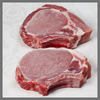
A federal judge in Massachusetts has agreed to delay the enforcement of Question 3, the state law that would ban the sale of pork that comes from animals not housed according to the state’s housing standards. Massachusetts’s Question 3 requirements are like those in California’s Proposition 12, which has been challenged in a case that will be heard by the Supreme Court this term, National Pork Producers Council v. Ross.
Read more
-

Sep
01
Homeland Security pursues support for agriculture defense
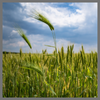
The United States Department of Homeland Security (DHS) Science and Technology Directorate (S&T) has released a request for information regarding capabilities for science support for the S&T Food, Agriculture, and Veterinary Defense Program (FAV-D). DHS recently established the Office of Health Security to refocus department efforts on human and agriculture security.
Read more
-

Sep
01
Gus Schumacher Nutrition Incentive Program receives USDA support
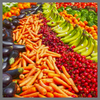
The Gus Schumacher Nutrition Incentive Program (GusNIP) brings together stakeholders from various parts of the food and healthcare systems. The United States Department of Agriculture (USDA) has announced almost $8 million to GusNIP’s Produce Prescription Project, as part of the American Rescue Plan to be administered by the USDA’s National Institute of Food and Agriculture (NIFA).
Read more
-

Sep
01
Food prices decline in July 2022
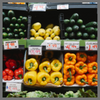
The Food and Agriculture Organization of the United Nations (FAO) has released the FAO Food Price Index (FFPI) for July 2022. The FFPI is a measure of the monthly change in international prices of a basket of food commodities.
Read more
-

Sep
01
Expanding Local Meat Processing Act Introduced
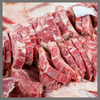
Expanding Local Meat Processing Act, a companion act to the Amplifying Processing of Livestock in the United States Act (A-Plus Act), has been introduced to the Senate. The bill would reduce regulatory red tape to enable livestock auction market owners to invest in small meat packing operations.
Read more
-

Sep
01
CHIPS Act is signed into law

The Creating Helpful Incentives to Produce Semiconductors for America Act or the CHIPS and Science Act of 2022 was passed by both the House and Senate with bipartisan support. The Act will strengthen American manufacturing, supply chains, and national security while investing in research and development, science and technology, and the workforce of the future to keep the United States as the international leader in specific industries.
Read more
-

Sep
01
Biden Administration supports pork producers in Prop 12
.png?sfvrsn=cea52d1_0)
The Solicitor General of the United States, Elizabeth Prelogar, has filed a brief in support of the National Pork Producers Council (NPPC) and the American Farm Bureau Federation’s (AFBF) lawsuit against California’s Proposition 12. The Proposition mandates farm animal confinement standards and directs the Department and the Department of Public Health to jointly promulgate regulations to implement the provisions for specified farm animals and the sale of specified products derived from them.
Read more
-

Sep
01
Americans prefer in-store grocery shopping, according to study
.png?sfvrsn=ecea52d1_0)
A new study from researchers at the University of Illinois Urbana-Champaign looked at how American food-buying behaviors have changed as a result of the COVID-19 pandemic. The researchers also examined how these behaviors changed through the development of vaccines and as case numbers fluctuated.
Read more
-

Aug
24
Interpretive Summary: Meta-analysis of the effects of the dietary application of exogenous alpha-amylase preparations on performance, nutrient digestibility, and rumen fermentation of lactating dairy cows
.png?sfvrsn=42ec52d1_0)
For more than a decade, starch-degrading enzymes (amylolytic enzymes) have been used as a strategy to increase total-tract starch degradation to increase milk yield of dairy cows. Therefore, we conducted a meta-analysis to evaluate the effectiveness of starch-degrading enzymes on starch digestion and milk yield in dairy cows.
Read more
-

Aug
24
Interpretive Summary: Effect of feeding calcium gluconate embedded in a hydrogenated fat matrix on feed intake, gastrointestinal fermentation and morphology, intestinal brush border enzyme activity and blood metabolites in growing lambs
.png?sfvrsn=6eec52d1_0)
Gluconate salts have been reported to be metabolized by microbes in the gastrointestinal tract to yield butyrate. Butyrate has shown potential to enhance functionality of the gastrointestinal tract by increasing the absorptive surface area, enzyme activity, and the barrier function.
Read more
-

Aug
24
Interpretive Summary: Effect of live yeast supplementation in sow diet during gestation and lactation on sow and piglet fecal microbiota, health, and performance
.png?sfvrsn=83ee52d1_0)
Feeding live yeast Saccharomyces cerevisiae var. boulardii (SB) in pig diets is recommended to promote a better health and reduce antibiotic use during critical periods like weaning. Our study was conducted to determine if SB added to the diet of sows during the last 2 mo of gestation and the 4 wk of lactation may contribute to support the health and performance of their piglets before and after weaning.
Read more
 SepInterpretive Summary: Feeding a high-energy finishing diet upon arrival to high-risk feedlot calves: effects on health, performance, ruminal pH, rumination, serum metabolites, and carcass traits
SepInterpretive Summary: Feeding a high-energy finishing diet upon arrival to high-risk feedlot calves: effects on health, performance, ruminal pH, rumination, serum metabolites, and carcass traits When high-risk cattle arrive at the feedlot, they have low feed consumption and a greater risk for disease because of stress, inflammation, and exposure to pathogens. Because of reduced feed consumption, newly arrived cattle may not be able to meet their energy requirement for growth during the first several weeks after feedlot arrival.
When high-risk cattle arrive at the feedlot, they have low feed consumption and a greater risk for disease because of stress, inflammation, and exposure to pathogens. Because of reduced feed consumption, newly arrived cattle may not be able to meet their energy requirement for growth during the first several weeks after feedlot arrival. SepInterpretive Summary: Precision feeding of lactating sows: implementation and evaluation of a decision support system in farm conditions
SepInterpretive Summary: Precision feeding of lactating sows: implementation and evaluation of a decision support system in farm conditions In lactating sows, nutrient requirements among individual animals vary greatly. With a single diet, lactating sows are likely to be either underfed, which results in body reserve mobilization, or overfed, which results in nutrient excretion.
In lactating sows, nutrient requirements among individual animals vary greatly. With a single diet, lactating sows are likely to be either underfed, which results in body reserve mobilization, or overfed, which results in nutrient excretion. SepInterpretive Summary: A preliminary exploration of the impact of experiential learning on animal science undergraduates’ perceptions of humane stunning and slaughter
SepInterpretive Summary: A preliminary exploration of the impact of experiential learning on animal science undergraduates’ perceptions of humane stunning and slaughter.png?sfvrsn=1cf852d1_0) It is essential to educate students about humane slaughter as it is a critical component of livestock production, particularly for animal science students who represent future stakeholders in agriculture. There is limited research about the effects of experiential learning on student comfort in participating in education regarding sensitive, yet important topics in the animal sciences.
It is essential to educate students about humane slaughter as it is a critical component of livestock production, particularly for animal science students who represent future stakeholders in agriculture. There is limited research about the effects of experiential learning on student comfort in participating in education regarding sensitive, yet important topics in the animal sciences. SepInterpretive Summary: Frequency of maternal supplementation of energy and protein during late gestation modulates preweaning growth of their beef offspring
SepInterpretive Summary: Frequency of maternal supplementation of energy and protein during late gestation modulates preweaning growth of their beef offspring.png?sfvrsn=b2ff52d1_0) Decreasing the frequency of protein and energy supplementation to beef cattle is often used to reduce labor and feeding costs. We hypothesized that reducing the frequency of protein and energy during third trimester of gestation of beef cows would not impact maternal performance but would be detrimental to offspring growth.
Decreasing the frequency of protein and energy supplementation to beef cattle is often used to reduce labor and feeding costs. We hypothesized that reducing the frequency of protein and energy during third trimester of gestation of beef cows would not impact maternal performance but would be detrimental to offspring growth. SepInterpretive Summary: Effects of adding potassium bicarbonate to diets with high or low crystalline lysine to influence dietary cation–anion difference on finishing pig growth performance
SepInterpretive Summary: Effects of adding potassium bicarbonate to diets with high or low crystalline lysine to influence dietary cation–anion difference on finishing pig growth performance.png?sfvrsn=dbf852d1_0) Potassium, fed as potassium bicarbonate (KHCO3) in this study, is essential for swine and is a key component of numerous physiological processes such as the maintenance of electrolyte balance, neuromuscular function. Feeding high levels of chloride anions, via crystalline lysine (L-Lys HCl) has been shown to negatively impact intake and growth performance of pigs.
Potassium, fed as potassium bicarbonate (KHCO3) in this study, is essential for swine and is a key component of numerous physiological processes such as the maintenance of electrolyte balance, neuromuscular function. Feeding high levels of chloride anions, via crystalline lysine (L-Lys HCl) has been shown to negatively impact intake and growth performance of pigs. SepInterpretive Summary: Effects of a Saccharomyces cerevisiae fermentation product-supplemented diet on circulating immune cells and oxidative stress markers of dogs
SepInterpretive Summary: Effects of a Saccharomyces cerevisiae fermentation product-supplemented diet on circulating immune cells and oxidative stress markers of dogs.png?sfvrsn=d6fe52d1_0) Saccharomyces cerevisiae fermentation product (SCFP) is a yeast product containing bioactive fermentation metabolites, residual yeast cells, and yeast cell wall fragments. In this study, SCFP was investigated for its impacts on immune health, oxidative stress, and skin and hair coat health in dogs.
Saccharomyces cerevisiae fermentation product (SCFP) is a yeast product containing bioactive fermentation metabolites, residual yeast cells, and yeast cell wall fragments. In this study, SCFP was investigated for its impacts on immune health, oxidative stress, and skin and hair coat health in dogs. SepInterpretive Summary: Infographic: Effects of a Saccharomyces cerevisiae fermentation product-supplemented diet on circulating immune cells and oxidative stress markers in dogs
SepInterpretive Summary: Infographic: Effects of a Saccharomyces cerevisiae fermentation product-supplemented diet on circulating immune cells and oxidative stress markers in dogs.png?sfvrsn=b1fe52d1_0) The American Society of Animal Science and the Editors of the Journal of Animal Science invite you to have a look at the latest infographic and paper which explores how a fermentation product included in the diet of dogs may impact immune cells, oxidative stress/inflammation and skin and coat health.
The American Society of Animal Science and the Editors of the Journal of Animal Science invite you to have a look at the latest infographic and paper which explores how a fermentation product included in the diet of dogs may impact immune cells, oxidative stress/inflammation and skin and coat health. SepUSDA investing $197 million in conservation
SepUSDA investing $197 million in conservation The United States Department of Agriculture (USDA) has announced through the Regional Conservation Partnership Program, that it will be awarding $197 million for 41 locally-led conservation projects. The Regional Conservation Partnership Program (RCPP) leverages partner resources to advance innovative projects that address climate change, enhance water quality, and address other critical challenges on agricultural land.
The United States Department of Agriculture (USDA) has announced through the Regional Conservation Partnership Program, that it will be awarding $197 million for 41 locally-led conservation projects. The Regional Conservation Partnership Program (RCPP) leverages partner resources to advance innovative projects that address climate change, enhance water quality, and address other critical challenges on agricultural land. SepThe Inflation Reduction Act voted on by House
SepThe Inflation Reduction Act voted on by House The House recently passed the Inflation Reduction Act, sending the legislation to the desk of President Joe Biden. The Act aims to lower healthcare costs, combat climate change, raise taxes on some large companies, and reduce the deficit.
The House recently passed the Inflation Reduction Act, sending the legislation to the desk of President Joe Biden. The Act aims to lower healthcare costs, combat climate change, raise taxes on some large companies, and reduce the deficit. SepMassachusetts delays rule banning the sale of some pork
SepMassachusetts delays rule banning the sale of some pork A federal judge in Massachusetts has agreed to delay the enforcement of Question 3, the state law that would ban the sale of pork that comes from animals not housed according to the state’s housing standards. Massachusetts’s Question 3 requirements are like those in California’s Proposition 12, which has been challenged in a case that will be heard by the Supreme Court this term, National Pork Producers Council v. Ross.
A federal judge in Massachusetts has agreed to delay the enforcement of Question 3, the state law that would ban the sale of pork that comes from animals not housed according to the state’s housing standards. Massachusetts’s Question 3 requirements are like those in California’s Proposition 12, which has been challenged in a case that will be heard by the Supreme Court this term, National Pork Producers Council v. Ross. SepHomeland Security pursues support for agriculture defense
SepHomeland Security pursues support for agriculture defense The United States Department of Homeland Security (DHS) Science and Technology Directorate (S&T) has released a request for information regarding capabilities for science support for the S&T Food, Agriculture, and Veterinary Defense Program (FAV-D). DHS recently established the Office of Health Security to refocus department efforts on human and agriculture security.
The United States Department of Homeland Security (DHS) Science and Technology Directorate (S&T) has released a request for information regarding capabilities for science support for the S&T Food, Agriculture, and Veterinary Defense Program (FAV-D). DHS recently established the Office of Health Security to refocus department efforts on human and agriculture security. SepGus Schumacher Nutrition Incentive Program receives USDA support
SepGus Schumacher Nutrition Incentive Program receives USDA support The Gus Schumacher Nutrition Incentive Program (GusNIP) brings together stakeholders from various parts of the food and healthcare systems. The United States Department of Agriculture (USDA) has announced almost $8 million to GusNIP’s Produce Prescription Project, as part of the American Rescue Plan to be administered by the USDA’s National Institute of Food and Agriculture (NIFA).
The Gus Schumacher Nutrition Incentive Program (GusNIP) brings together stakeholders from various parts of the food and healthcare systems. The United States Department of Agriculture (USDA) has announced almost $8 million to GusNIP’s Produce Prescription Project, as part of the American Rescue Plan to be administered by the USDA’s National Institute of Food and Agriculture (NIFA). SepFood prices decline in July 2022
SepFood prices decline in July 2022 The Food and Agriculture Organization of the United Nations (FAO) has released the FAO Food Price Index (FFPI) for July 2022. The FFPI is a measure of the monthly change in international prices of a basket of food commodities.
The Food and Agriculture Organization of the United Nations (FAO) has released the FAO Food Price Index (FFPI) for July 2022. The FFPI is a measure of the monthly change in international prices of a basket of food commodities. SepExpanding Local Meat Processing Act Introduced
SepExpanding Local Meat Processing Act Introduced Expanding Local Meat Processing Act, a companion act to the Amplifying Processing of Livestock in the United States Act (A-Plus Act), has been introduced to the Senate. The bill would reduce regulatory red tape to enable livestock auction market owners to invest in small meat packing operations.
Expanding Local Meat Processing Act, a companion act to the Amplifying Processing of Livestock in the United States Act (A-Plus Act), has been introduced to the Senate. The bill would reduce regulatory red tape to enable livestock auction market owners to invest in small meat packing operations. SepCHIPS Act is signed into law
SepCHIPS Act is signed into law The Creating Helpful Incentives to Produce Semiconductors for America Act or the CHIPS and Science Act of 2022 was passed by both the House and Senate with bipartisan support. The Act will strengthen American manufacturing, supply chains, and national security while investing in research and development, science and technology, and the workforce of the future to keep the United States as the international leader in specific industries.
The Creating Helpful Incentives to Produce Semiconductors for America Act or the CHIPS and Science Act of 2022 was passed by both the House and Senate with bipartisan support. The Act will strengthen American manufacturing, supply chains, and national security while investing in research and development, science and technology, and the workforce of the future to keep the United States as the international leader in specific industries. SepBiden Administration supports pork producers in Prop 12
SepBiden Administration supports pork producers in Prop 12.png?sfvrsn=cea52d1_0) The Solicitor General of the United States, Elizabeth Prelogar, has filed a brief in support of the National Pork Producers Council (NPPC) and the American Farm Bureau Federation’s (AFBF) lawsuit against California’s Proposition 12. The Proposition mandates farm animal confinement standards and directs the Department and the Department of Public Health to jointly promulgate regulations to implement the provisions for specified farm animals and the sale of specified products derived from them.
The Solicitor General of the United States, Elizabeth Prelogar, has filed a brief in support of the National Pork Producers Council (NPPC) and the American Farm Bureau Federation’s (AFBF) lawsuit against California’s Proposition 12. The Proposition mandates farm animal confinement standards and directs the Department and the Department of Public Health to jointly promulgate regulations to implement the provisions for specified farm animals and the sale of specified products derived from them. SepAmericans prefer in-store grocery shopping, according to study
SepAmericans prefer in-store grocery shopping, according to study.png?sfvrsn=ecea52d1_0) A new study from researchers at the University of Illinois Urbana-Champaign looked at how American food-buying behaviors have changed as a result of the COVID-19 pandemic. The researchers also examined how these behaviors changed through the development of vaccines and as case numbers fluctuated.
A new study from researchers at the University of Illinois Urbana-Champaign looked at how American food-buying behaviors have changed as a result of the COVID-19 pandemic. The researchers also examined how these behaviors changed through the development of vaccines and as case numbers fluctuated. AugInterpretive Summary: Meta-analysis of the effects of the dietary application of exogenous alpha-amylase preparations on performance, nutrient digestibility, and rumen fermentation of lactating dairy cows
AugInterpretive Summary: Meta-analysis of the effects of the dietary application of exogenous alpha-amylase preparations on performance, nutrient digestibility, and rumen fermentation of lactating dairy cows.png?sfvrsn=42ec52d1_0) For more than a decade, starch-degrading enzymes (amylolytic enzymes) have been used as a strategy to increase total-tract starch degradation to increase milk yield of dairy cows. Therefore, we conducted a meta-analysis to evaluate the effectiveness of starch-degrading enzymes on starch digestion and milk yield in dairy cows.
For more than a decade, starch-degrading enzymes (amylolytic enzymes) have been used as a strategy to increase total-tract starch degradation to increase milk yield of dairy cows. Therefore, we conducted a meta-analysis to evaluate the effectiveness of starch-degrading enzymes on starch digestion and milk yield in dairy cows. AugInterpretive Summary: Effect of feeding calcium gluconate embedded in a hydrogenated fat matrix on feed intake, gastrointestinal fermentation and morphology, intestinal brush border enzyme activity and blood metabolites in growing lambs
AugInterpretive Summary: Effect of feeding calcium gluconate embedded in a hydrogenated fat matrix on feed intake, gastrointestinal fermentation and morphology, intestinal brush border enzyme activity and blood metabolites in growing lambs.png?sfvrsn=6eec52d1_0) Gluconate salts have been reported to be metabolized by microbes in the gastrointestinal tract to yield butyrate. Butyrate has shown potential to enhance functionality of the gastrointestinal tract by increasing the absorptive surface area, enzyme activity, and the barrier function.
Gluconate salts have been reported to be metabolized by microbes in the gastrointestinal tract to yield butyrate. Butyrate has shown potential to enhance functionality of the gastrointestinal tract by increasing the absorptive surface area, enzyme activity, and the barrier function. AugInterpretive Summary: Effect of live yeast supplementation in sow diet during gestation and lactation on sow and piglet fecal microbiota, health, and performance
AugInterpretive Summary: Effect of live yeast supplementation in sow diet during gestation and lactation on sow and piglet fecal microbiota, health, and performance.png?sfvrsn=83ee52d1_0) Feeding live yeast Saccharomyces cerevisiae var. boulardii (SB) in pig diets is recommended to promote a better health and reduce antibiotic use during critical periods like weaning. Our study was conducted to determine if SB added to the diet of sows during the last 2 mo of gestation and the 4 wk of lactation may contribute to support the health and performance of their piglets before and after weaning.
Feeding live yeast Saccharomyces cerevisiae var. boulardii (SB) in pig diets is recommended to promote a better health and reduce antibiotic use during critical periods like weaning. Our study was conducted to determine if SB added to the diet of sows during the last 2 mo of gestation and the 4 wk of lactation may contribute to support the health and performance of their piglets before and after weaning.



